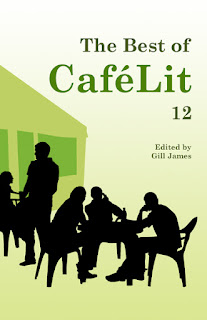I wanted to write, even when I was at primary school, and, because I was reading children’s novels, voraciously, I fell into the idea that I also should write novels. As time went on, I saw how some characters and their situations don’t need the 100,000 word treatment and focus can be sharper in fewer words. I have since discovered flash and come to appreciate the impact of just a few well-crafted hundred words.
Novels. (Now there’s a surprise!) My historical novel, Wodka or Tea With Milk, which features the Polish Solidarity trade union in the 1980s was published by The Conrad Press in 2023. Before that, I had written many others, ‘practice novels’ you might call them, none of which have been accepted for publication – thank Goodness!
When submitting stories to ezines and print magazines or entering competitions, follow the guidelines exactly. Keep to deadlines. Keep to word counts. Use the format requested eg .docx. Gain yourself a reputation for being professional. If you are fortunate to have your single author collection published by Gill and she asks you for edits, do them promptly. (When Gill asked for the first lot of edits for Past and Present, I was on the Danube on a cruise, but I set myself the task of editing one story per day.)
When writing a short story in any genre, get your facts straight. You’d be amazed how lax some writers are. Look at as many primary sources as you can. For The Witch, I downloaded and pored over a word-by-word account of Nicolae Ceausescu’s last speech from the Communist Party headquarters in Bucharest in 1989. Look at photographs of the places where the action in your story took place. If possible, visit this place. I visited what is now called Solidarnosc Square in Gdansk which featured in Anna the Dissident (and in my Wodka or Tea With Milk novel). If you’re writing ‘historical’, think about how people spoke at the time you’re writing about; if you’re setting your story in the twentieth century read fiction written at the time in question. But don’t over-egg it. A few well-chosen expressions will establish the period, but the dialogue will still be comprehensible to the reader.
The big question for me is what is ‘historical’ fiction. According to the Historical Novel Society, the action in historical fiction must take place at least 50 years ago, but, in my opinion, where setting is defined by events at a particular time, even a recent time, that piece is ‘historical’. For instance, the action in Tomatoes and Their Part in Brexit, could only take place within a specific few days in June 2016 – just nine years ago. At this moment in time, Eight O’Clock belongs to the present, because many people struggle to make appointments with their doctor over the telephone. In a few years, maybe the NHS will improve and this will no longer be the issue, so the story may become ‘historical’.
When putting together this collection, I selected what I considered to be my ‘best’ stories, but now I realise that the ones I chose cover the range of my short story writing. I love history. I am a history graduate. Mancunians following Gill’s blog may like to know that I studied at Manchester University. Communism and the fall of Communism are topics which particularly interests me, which is why I came to write Anna the Dissident and The Witch. Local history also fascinates me; the idea for Not a Proper Evacuee came from seeing photos at an exhibition of London Routemaster buses driving down Halstead High Street in Essex, bringing in the evacuees at the start of World War 2.
I also like to observe human nature and its foibles, and the common irritations of modern life, such as ringing an unhelpful helpline (An Important Call) and a village community pussyfooting around a noisy peacock (Bachelor Boy). I love writing humour and these sort of situations lend themselves to it.
I am currently looking at other short stories, which I wrote while Past and Present was under production, and considering submitting another collection. I would like, also, to write more longer works. I like to get stuck in with a group of characters and spend several months with them. I have an idea for a novel about middle-aged women football supporters. My Blue Period was a sort of dry run for this.
There will be an online launch of Past and Present with Gill, and also Allison Symes (who will be very familiar to Bridge House readers) on Friday, 1 August at 7.15pm. Readers can book this through Eventbrite. We would love to see you!
I am attempting to arrange a book-signing at local libraries. Unfortunately, our library service is underfunded and so librarians are not in a position to offer many promotional opportunities to local authors. Online promotion events are therefore very important. I have also placed both Past and Present and Wodka or Tea With Milk in the Essex Libraries Local Writers’ Showcase which is also online.
Thank you, Rosemary
Find a copy of Past and Present here.



















